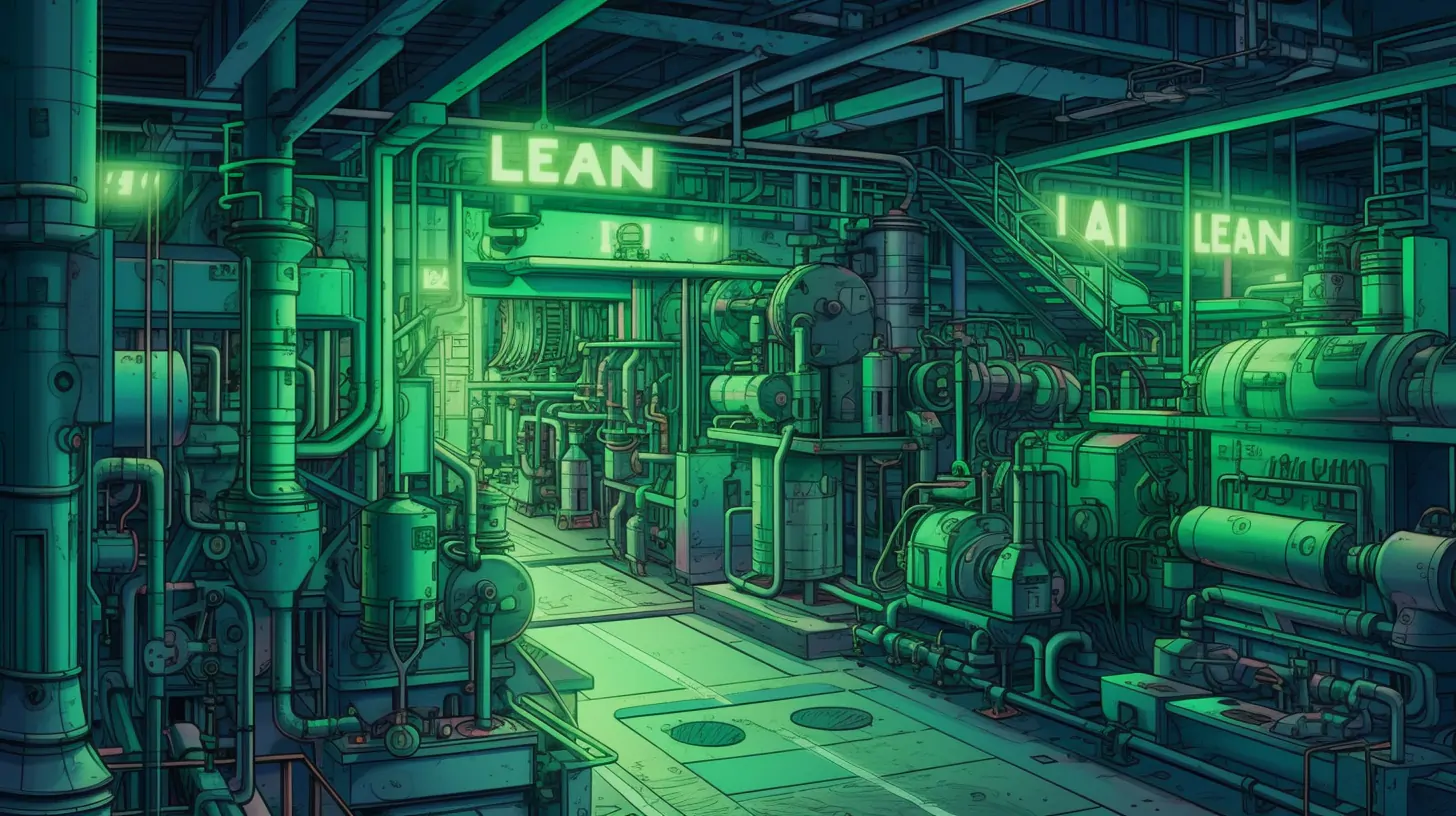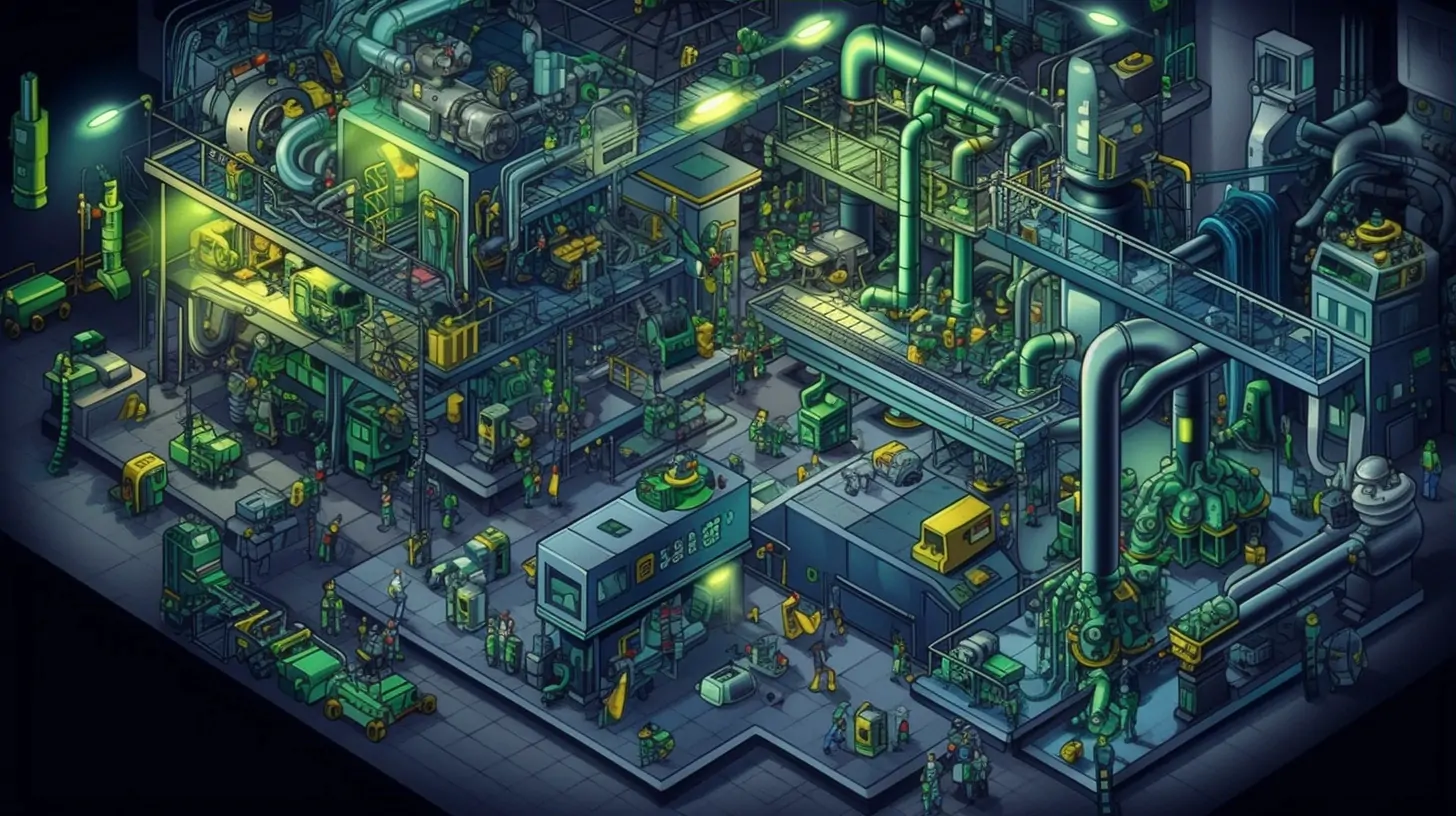Interesting statistics
Overcoming Obstacles in the Implementation of Automation in Lean Manufacturing
Automation and Lean Manufacturing in the Digital Age are Two Future Trends
An Overview of Lean Manufacturing
Lean manufacturing emerged in the twentieth century as a paradigm-shifting approach to manufacturing processes to minimize waste and maximize efficiency in a manufacturing system. This concept originated as part of the Toyota Production System and has since been adopted by many industries worldwide.

Lean manufacturing is more than just a set of best practices or a productivity toolkit; it is a philosophy emphasizing the importance of a customer-focused, waste-free process in which each step is meticulously synchronized to create an optimal process flow. Any activity that does not add value to the production process is eliminated in lean manufacturing. Overproduction, waiting time, transportation, over-processing, excess inventory, unnecessary movement, and defects are all examples of waste.
The goal is to reduce or eliminate non-value-added activities while focusing on those directly contributing to the product's value from the customer's perspective. Businesses use lean thinking to deliver the highest quality products at the lowest possible cost and in the shortest amount of time. Lean manufacturing's ultimate goal is to provide excellent value to customers through a perfect value-creation process with zero waste.
A Brief Introduction to Automation
Automation is the use of technology to perform tasks previously performed by humans. Automation, in its most basic form, involves mechanizing repetitive tasks. On the other hand, automation can use advanced technologies such as artificial intelligence and machine learning to automate decision-making processes in a more sophisticated form.

Automation is commonly used to optimize manufacturing processes, improve efficiency, reduce errors, and maintain high consistency and quality. This includes everything from simple machinery like conveyor belts that move products around a factory to complex AI systems like machines that perform complex assembly tasks precisely and quickly.
Examples of automation technologies are industrial robots, automated storage and retrieval systems, machine vision systems, conveyor systems, programmable logic controllers, and numerically controlled machines. The degree of automation can range from partially automated systems in which humans and machines collaborate to fully automated systems that require no human intervention.
Understanding that automation is more than just replacing human labor with machines is critical. It is instead about using technology to boost productivity, improve accuracy, and free people from repetitive, mundane tasks, allowing them to focus on more complex, creative, and rewarding activities. Automation can significantly improve productivity, quality, and operational efficiency when implemented correctly, making it an essential component of modern manufacturing strategies.
The Confluence of Lean Manufacturing and Automation
Some of the most impressive advances in manufacturing are taking place at the intersection of lean and automation. Lean manufacturing seeks to minimize waste and maximize value; automation can help achieve these objectives. While Lean and Automation appear to be opposing strategies, they are complementary.
The primary goal of lean manufacturing is to eliminate waste from the manufacturing process. Automation can assist by performing tasks more efficiently than humans, saving time and resources. Automated systems can also run indefinitely, reducing downtime in the manufacturing process.
Furthermore, lean manufacturing emphasizes the smooth flow of work when each stage of the manufacturing process is closely coordinated with others. This is aided by automation, which provides a consistent, accurate, and predictable result, making it simple to synchronize the various steps in the manufacturing process.
Lean provides the philosophical and strategic framework for reducing waste and creating value, while automation provides the tools and technologies.
Automation Enhances Lean Principles
Automation enhances Lean principles in a variety of ways. Let's get into the specifics:
Automation can help you save money by reducing waste.
Automation is crucial in reducing waste, a central principle of lean manufacturing. In general, automated systems are more efficient than manual processes, resulting in less waste of time and materials. They can complete tasks quickly and accurately, resulting in fewer errors and rework. Furthermore, automated systems can run indefinitely, reducing downtime and downtime.
Using automated systems to improve the flow
The smooth transition of work from one stage of the manufacturing process to the next is emphasized in lean manufacturing. Automated systems can help by delivering consistent and predictable results. This facilitates the synchronization of various stages of the manufacturing process, reducing delays and bottlenecks.
Automation is being used to improve extrusion.
Another fundamental principle is the concept of "pull," which entails producing only what is needed, when it is needed, based on actual demand. Automation can help by providing real-time production and demand data, allowing manufacturers to adjust production levels quickly and accurately in response to changes in demand.
Towards Excellence: The Role of Automation
The ultimate goal here is perfection - zero waste and 100% value. While this may be more of a pipe dream than a practical reality, automation can help manufacturers get closer. Automated systems can provide consistency, accuracy, and efficiency that manual processes cannot match, reducing errors and waste.
Case Studies: Success Stories in Lean Automation
Several industry success stories have resulted from combining lean principles with automation. Let's look at a couple of examples:
Toyota's success story in the automotive industry
Toyota, the company that pioneered lean manufacturing, is perhaps the most well-known example of successful automation. Toyota has successfully implemented automated systems on its manufacturing lines, increasing process efficiency, reducing waste, and maintaining high-quality standards. The Toyota Production System is a lean manufacturing model demonstrating how automation can be combined with lean principles to achieve exceptional results.
Siemens digital factory in the electronics industry
A global electronics and electrical engineering leader, Siemens has also been a vocal advocate for automation. The company's Digital Factory initiative is an excellent example of how digitalization and automation can improve lean manufacturing efficiency.
Using advanced automation technology and digital manufacturing software, Siemens optimizes manufacturing processes, reduces waste, and increases efficiency. This increased their operational efficiency and allowed them to respond to changes in market demand more quickly and flexibly.
Overcoming Obstacles in the Implementation of Automation in Lean Manufacturing
Despite the apparent benefits, implementing automation in a lean environment is challenging. Some of these disadvantages include the initial cost of automation technology, the requirement for skilled workers to operate and maintain automated systems, and the risk of over-automation, which occurs when the level of automation exceeds what is beneficial.

These obstacles, however, can be overcome with careful planning and execution. Automation, for example, can justify the initial investment through long-term savings and efficiency gains. Training programs can be implemented to improve workers' skills, and a balanced approach to automation can be taken to ensure that it is used where it adds the most value while not creating new forms of waste.
Automation and Lean Manufacturing in the Digital Age are Two Future Trends
As we look ahead, the synergy between automation and lean will likely become even more significant. Artificial intelligence, machine learning, and the Internet of Things (IoT) are enabling new forms of automation that can improve the efficiency of lean manufacturing even further.
For example, artificial intelligence and machine learning can analyze real-time production data, identifying flaws and suggesting improvements. IoT devices can monitor the health of equipment and predict maintenance requirements, reducing downtime and waste. These technologies can also support a more flexible and agile manufacturing approach, allowing businesses to quickly adapt to changes in demand.
Conclusion: There is a synergy between lean and automation.
To summarize, automation is critical in lean manufacturing because it helps to reduce waste, improve efficiency, and create more value for customers. While implementing automation may have challenges, they can be overcome with careful planning and execution, and the benefits can be substantial.
The synergy between lean manufacturing and automation is likely to grow even more vital as advanced technologies enable new forms of automation that can improve lean manufacturing efficiency even further. Manufacturers can achieve world-class efficiency, flexibility, and customer value by combining lean principles and automation.




